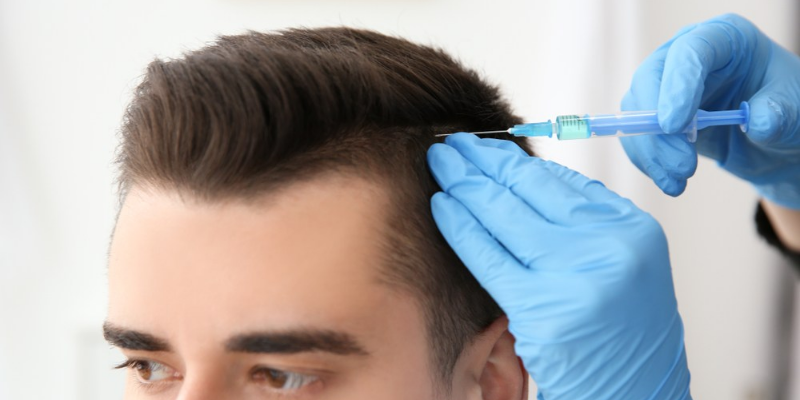How Long After Hair Transplant Is There Full Growth?
How long after hair transplant is there full growth? Hair loss can make you feel bad about yourself and cause other mental problems. Androgenetic alopecia is a type of hair loss that can be treated. In the past 10 years, technical and scientific advances in microsurgical tools have made it possible to do hair transplants that look natural. Everyone has the option of getting a hair transplant or looking good. Everyone wants to take advantage of this right. But the place or people doing the transplant may not want to do that in some cases. Some of them have diseases that can spread to other people. If a contagious disease is found in the blood of the person getting a transplant, it is unlikely that the disease will spread to the surgical team during the transplant.
This tool was first made in the United States to make hair transplants safer for people with infectious diseases. If the surgery still needs to be done, using a robot will be the safest way to do it.
How Long After Hair Transplant Is There Full Growth Chart?
A hair transplant growth chart is one of the most confusing things for people who are thinking about getting a hair transplant. The person who had the transplant can’t wait to look different. Because the hair transplant growth chart is different for each person, it is hard to say how long this will take. But people who have had hair transplants have shown that it takes about 10 to 12 months for the hair to grow back completely. This process can be sped up or slowed down by the type of hair and the environment.
The way a hair transplant turns out for each person may be different. Doctors should carefully look at the health of the person getting a hair transplant and make plans based on that. After hair transplantation, evaluations should also take these things into account.
Hair Transplant Growth Chart Parts
In the first two weeks after a hair transplant, small sores in the area heal by forming scabs. During this time, hair follicles that were transplanted stay in their new places and adapt. After the shock shedding phase, when hair goes back to its normal growth cycle, it can grow up to 1 centimeter per month. During the first stage of growth, these hairs may be weaker than other hair.
This process, which starts right after a hair transplant and lasts about a week, begins right away. During this week, the scalp becomes more sensitive and more likely to get sick from pathogens. Because of this, the scalp should be treated with extra care, and it should be kept from getting sick. The first washing, on the other hand, should be done by the clinic that put the device in. This process of washing should definitely be done three days after the hair transplant.
After the first three days, shampoos made just for people who have had hair transplants should be used to wash the hair every day. Also, shampoo should be used 1-2 times while washing hair, and it should be put on the scalp gently each time. Using a towel to remove moisture from the hair during the drying process is another important step. A hair dryer is not a good idea. It is very important to keep the head from getting hit, especially in the first week.
Because drinking and smoking slow down the healing process, you should avoid doing them, especially in the first week after a hair transplant. During sleep, the pillow should not touch the top of the head, which is called the scalp. These things are also important in a growth chart for hair transplants.
Shock Loss
Before the hair transplant growth chart phase comes this one. Shock shedding is another method of hair transplantation. It is also called temporary shedding. After the first healing period is over, the hair strands need to lose this amount of hair in order to return to their normal growth shape. About a month after the hair transplant procedure, the shock loss process starts. With shock shedding, hair follicles do not fall out all at once. It takes about 1.5 months to shed. This spill could be big for some people and small for others.
During this phase, you should use the shampoo that you were told to use after hair transplantation. Also, a healthy eating plan shouldn’t be thrown out the window in order to feed the hair follicles. During this time of shock, people should avoid bad habits like smoking and drinking. At regular times, use light strokes to massage the scalp. Also, there shouldn’t be any breaks in taking medications prescribed by a doctor. During a shower, the water pressure should be set up right. You shouldn’t cut your hair with a razor or a machine; instead, you should use scissors. These things should be thought about during the hair transplant growth chart process.
Growing Stage
Shock loss stops two months after a hair transplant, and hair transplants have a growth chart. After four months, the hair starts to grow and take on a shape. By the sixth month, hair follicles have grown by 60%. After eight months, hair follicles that are growing normally get thicker and start to take their natural shape. At the end of the 12th month, hair follicles are still growing at a steady rate. Here are the main stages of the hair transplant growth chart topic.
People who are thinking about getting hair transplants should first go through a series of exams and tests. Then, your doctor will do the necessary hair transplantation tests based on the results of the tests. At this point, it is very important to make plans that are unique to each person. The density of the hair that is transplanted and how well the hair transplant works vary from person to person. But for hair transplantation to work, a certain procedure is needed. First, in order to see a difference after hair transplantation, the scabs that form must fall off and the wounds must heal.
It takes about a year for hair transplantation to give the desired results. At this point, what you expect from your hair transplant growth chart should be reasonable. Because the procedure will take a year, you must take care of the transplanted hair during that time. If, after a year, you still don’t have enough hair, you can get a second or third hair transplant.
How Long After Bariatric Surgery Can You Have Caffeine as a Coffee Drinker?
As someone who enjoys coffee, you may have wondered if it is safe to consume caffeine after having bariatric surgery. The answer to the question “how long after bariatric surgery can you have caffeine?” is with restrictions, after waiting for at least three months. This is because the surgery reduces the amount of stomach acid that is produced, which can affect the absorption of certain compounds found in coffee. In answering, “can you drink fizzy drinks after gastric sleeve or any other bariatric surgery?” you should also avoid any other high-caffeine beverages such as energy drinks and soda. When you do start drinking coffee again, it is important to do so in moderation. Caffeine can cause dehydration and increase your risk of developing kidney stones, so it’s best to limit your intake of coffee to no more than two cups per day. It’s also essential to avoid adding any sugar or artificial sweeteners to your coffee since these can cause problems like gas and bloating. Additionally, be sure to drink plenty of water throughout the day to help keep you hydrated and reduce the chances of developing any complications. We hope this article answers “how long after bariatric surgery can you have caffeine?”




